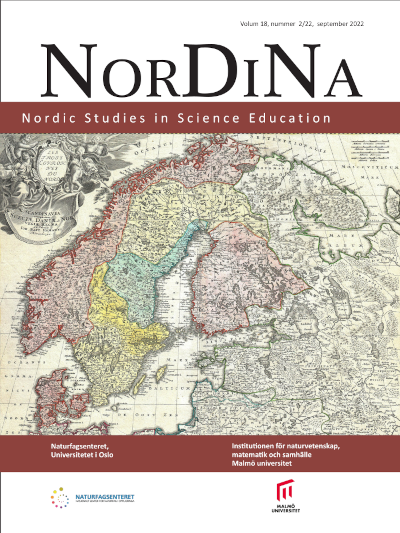Multimodality in the teaching of biology:
comparing some semiotic resources
DOI:
https://doi.org/10.5617/nordina.8740Abstract
In the teaching of scientific subjects, several semiotic resources such as images, texts, physical models, audio recordings and film have been used for a long time. In recent years, digital learning resources have also been added, such as simulations and virtual and augmented realities. In this paper, an investigation of how pupils understand the science of hearing and the anatomy of the ear with the support of various semiotic resources is performed by a teacher/researcher. How do pupils reflect on their understanding of hearing when they use different semiotic resources in teaching? In this investigation five different semiotic resources are compared. The analysis of questionnaires, interviews and lesson observations shows how the pupils move between the different modalities. The findings indicate that pupils can benefit from using carefully chosen different semiotic resources. It could also matter in which order the semiotic resources are used. The study shows that embodied cognition plays a prominent role, such as touching a physical model of an ear. Furthermore, understanding the anatomy of the ear is described as better using a physical model, while understanding the process of hearing is described as better using a simulation. These findings can be useful for teachers, student teachers, teacher educators and teaching aid developers.
Downloads
Published
Issue
Section
License
Authors who publish with this journal agree to the following terms:- Authors retain copyright and grant the journal right of first publication with the work simultaneously licensed under a Creative Commons Attribution License that allows others to share the work with an acknowledgement of the work's authorship and initial publication in this journal.
- Authors are able to enter into separate, additional contractual arrangements for the non-exclusive distribution of the journal's published version of the work (e.g., post it to an institutional repository or publish it in a book), with an acknowledgement of its initial publication in this journal.
- Authors are permitted and encouraged to post their work online (e.g., in institutional repositories or on their website) prior to and during the submission process, as it can lead to productive exchanges, as well as earlier and greater citation of published work (See The Effect of Open Access).


